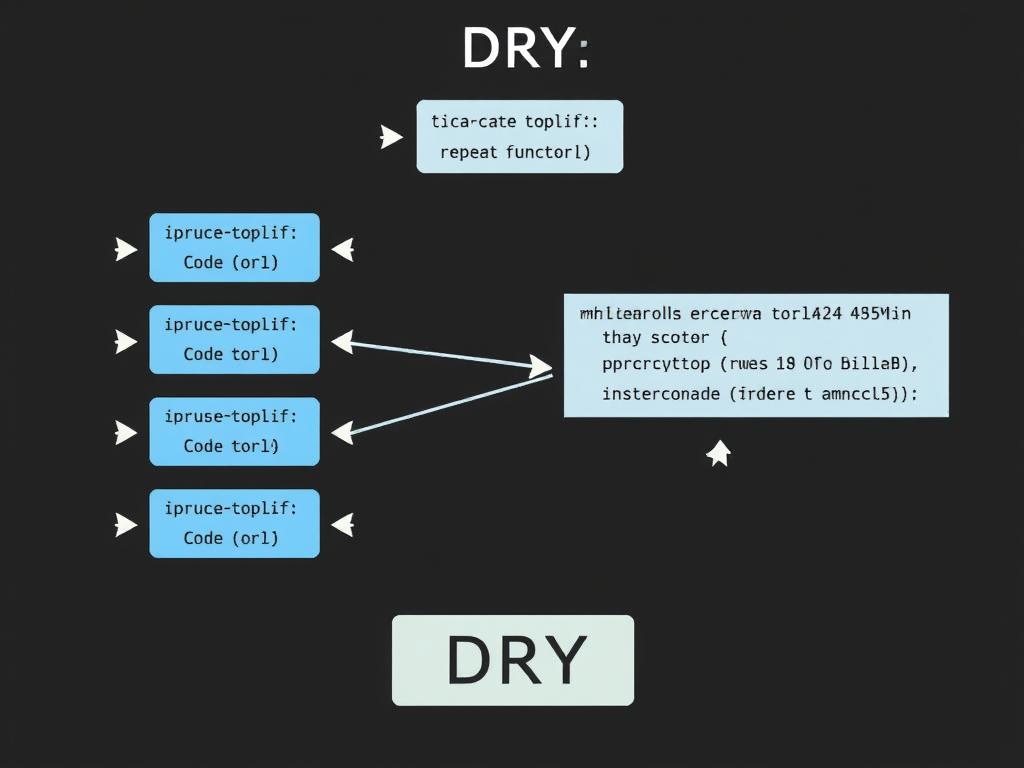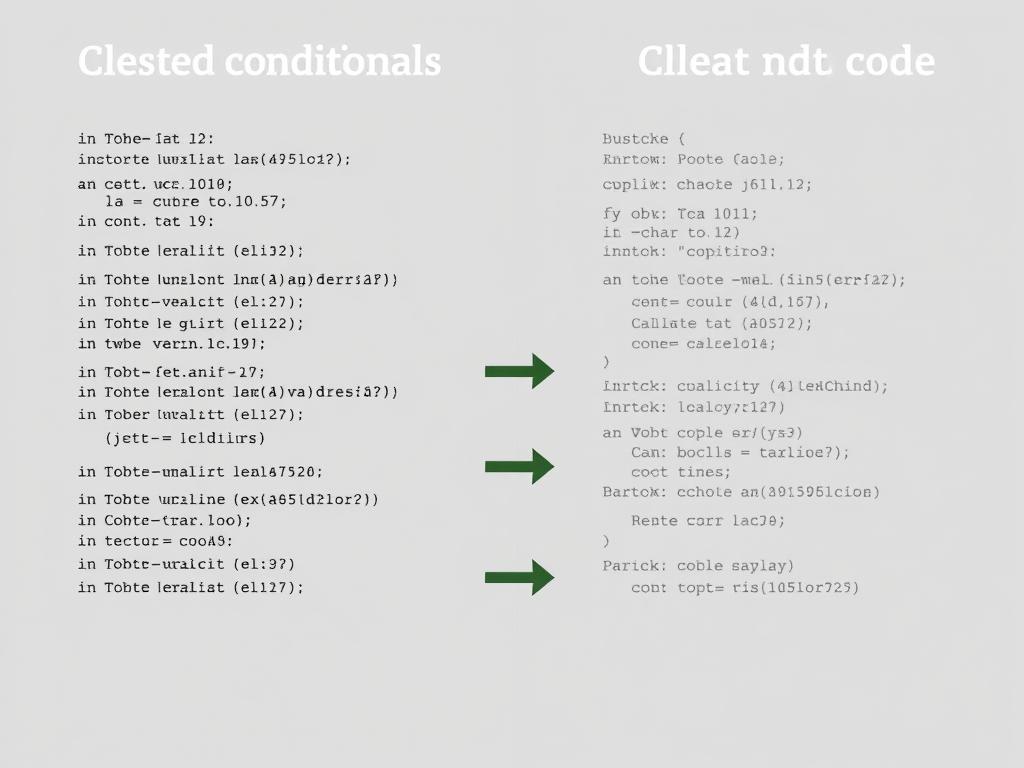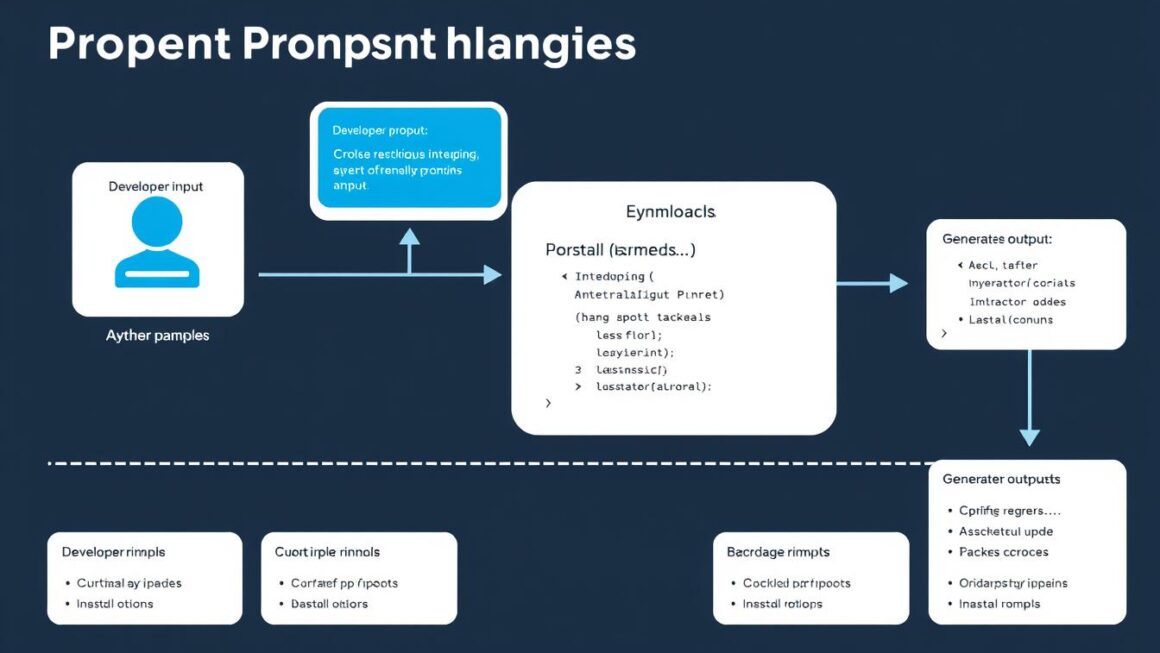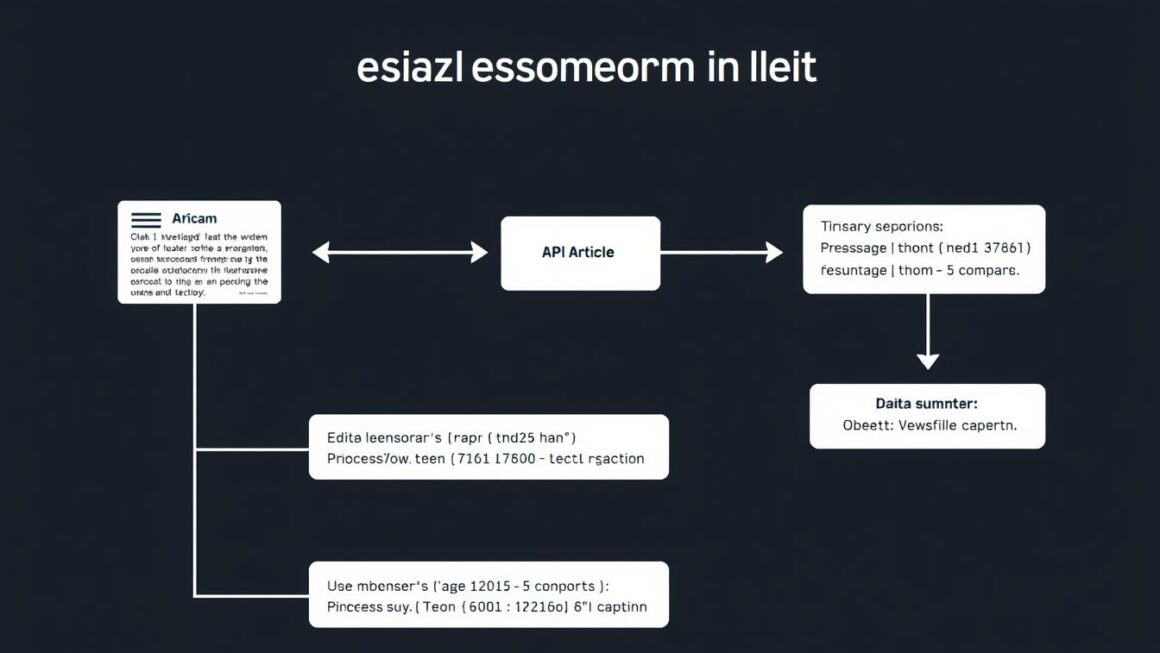Writing code that works is just the beginning. Creating code that’s readable, maintainable, and easy to understand is what separates good developers from great ones. Throughout my career, I’ve learned that clean code isn’t just about aesthetics—it’s about creating software that can evolve with changing requirements and be understood by other team members months or years later.
In this article, I’ll share real examples from my own projects where applying clean code principles made a significant difference. You’ll see actual before-and-after code snippets, practical insights on how these changes improved collaboration, and actionable tips you can apply to your own work today.
Why Clean Code Matters
Clean code isn’t just a preference—it’s a necessity for sustainable software development. When I first started coding, I focused solely on making things work. The result? Code that became increasingly difficult to maintain as projects grew.
Consider this scenario: you return to code you wrote six months ago. If it takes you hours to understand your own logic, imagine how challenging it is for others on your team. Clean code addresses this by making your intentions clear through proper structure, naming, and organization.
The benefits I’ve personally experienced include:
- Faster onboarding – New team members understand the codebase more quickly
- Reduced bugs – Clear code exposes logical errors more readily
- Easier maintenance – Changes can be implemented with less risk
- Better collaboration – Team members can work on the same codebase without confusion
- Improved scalability – Clean code adapts better to changing requirements
Let’s explore how specific clean code principles transformed my real-world projects.
DRY Principle: Eliminating Repetition
Don’t Repeat Yourself in Action
The DRY (Don’t Repeat Yourself) principle states that “every piece of knowledge must have a single, unambiguous representation within a system.” In one of my e-commerce projects, I noticed we had duplicated API call logic across multiple components.

Here’s a real example from that project:
Before: Duplicated API Calls
// In ProductList.js
function fetchProducts() {
setLoading(true);
fetch('/api/products')
.then(response => response.json())
.then(data => {
setProducts(data);
setLoading(false);
})
.catch(error => {
setError('Failed to load products');
setLoading(false);
});
}
// In CategoryPage.js
function fetchCategoryProducts(categoryId) {
setLoading(true);
fetch(`/api/products?category=${categoryId}`)
.then(response => response.json())
.then(data => {
setCategoryProducts(data);
setLoading(false);
})
.catch(error => {
setError('Failed to load category products');
setLoading(false);
});
}
After: Centralized API Service
// In apiService.js
export async function fetchData(endpoint, options = {}) {
try {
const response = await fetch(endpoint, options);
if (!response.ok) {
throw new Error(`API error: ${response.status}`);
}
return await response.json();
} catch (error) {
console.error(`API request failed: ${error.message}`);
throw error;
}
}
// In ProductList.js
import { fetchData } from './apiService';
async function fetchProducts() {
try {
setLoading(true);
const data = await fetchData('/api/products');
setProducts(data);
} catch (error) {
setError('Failed to load products');
} finally {
setLoading(false);
}
}
// In CategoryPage.js
import { fetchData } from './apiService';
async function fetchCategoryProducts(categoryId) {
try {
setLoading(true);
const data = await fetchData(`/api/products?category=${categoryId}`);
setCategoryProducts(data);
} catch (error) {
setError('Failed to load category products');
} finally {
setLoading(false);
}
}
By centralizing our API logic, we eliminated duplicate code and gained several benefits:
- Reduced the codebase size by approximately 30%
- Implemented consistent error handling across all API calls
- Made it easier to add features like request caching and authentication
- Simplified testing with a single point of responsibility
This refactoring made our code more maintainable and significantly reduced bugs related to inconsistent API handling.
KISS Implementation: Simplifying Complex Logic
Keep It Simple, Stupid in Practice
The KISS principle reminds us that simplicity should be a key goal in design. In a dashboard application I worked on, we had a particularly complex user permission check function that had grown unwieldy over time.

Before: Nested Conditional Nightmare
function canUserAccessFeature(user, feature) {
if (user) {
if (user.permissions) {
if (user.permissions.includes('admin')) {
return true;
} else if (user.permissions.includes('editor')) {
if (feature === 'edit' || feature === 'view') {
if (user.department === 'content' || user.specialAccess) {
return true;
} else {
return false;
}
} else if (feature === 'view') {
return true;
} else {
return false;
}
} else if (user.permissions.includes('viewer')) {
if (feature === 'view') {
return true;
} else {
return false;
}
} else {
return false;
}
} else {
return false;
}
} else {
return false;
}
}
After: Simplified Permission Logic
function canUserAccessFeature(user, feature) {
// Early returns for invalid inputs or admin access
if (!user || !user.permissions) return false;
if (user.permissions.includes('admin')) return true;
// Permission mapping
const permissionRules = {
editor: {
view: true,
edit: user => user.department === 'content' || user.specialAccess
},
viewer: {
view: true
}
};
// Find the user's highest role that has defined rules
for (const role of ['editor', 'viewer']) {
if (user.permissions.includes(role)) {
const roleRules = permissionRules[role];
const rule = roleRules[feature];
// Rule can be boolean or function
if (typeof rule === 'function') {
return rule(user);
}
return !!rule;
}
}
return false;
}
The refactored code brought several improvements:
- Reduced cyclomatic complexity from 15 to 5
- Made the permission logic declarative rather than imperative
- Eliminated the “arrow” shape of deeply nested conditionals
- Made it easier to add new roles and permissions
- Improved testability with clear, separated concerns
This simplification made the code much easier to understand and maintain, while also making it more flexible for future changes.
SOLID Case Study: Dependency Injection
Single Responsibility Principle in Action

In a notification system I developed, we initially had a monolithic NotificationService class that handled email, SMS, and push notifications. This violated the Single Responsibility Principle and made testing difficult.
Before: Monolithic Notification Service
class NotificationService {
constructor() {
this.emailConfig = {
host: 'smtp.example.com',
port: 587,
auth: { user: 'user', pass: 'password' }
};
this.smsProvider = 'twilio';
this.smsApiKey = 'abc123';
this.pushConfig = {
apiKey: 'xyz789',
appId: 'com.example.app'
};
}
sendNotification(user, message, type) {
if (type === 'email') {
// 30 lines of email sending logic
console.log(`Email sent to ${user.email}`);
} else if (type === 'sms') {
// 25 lines of SMS sending logic
console.log(`SMS sent to ${user.phone}`);
} else if (type === 'push') {
// 40 lines of push notification logic
console.log(`Push notification sent to ${user.deviceId}`);
}
}
// Many more methods for handling different notification scenarios
}
After: SOLID Implementation with Dependency Injection
// Interface for notification providers
class NotificationProvider {
send(recipient, message) {
throw new Error('Method not implemented');
}
}
class EmailProvider extends NotificationProvider {
constructor(config) {
super();
this.config = config;
}
send(recipient, message) {
// Email-specific sending logic
console.log(`Email sent to ${recipient}`);
return true;
}
}
class SmsProvider extends NotificationProvider {
constructor(config) {
super();
this.config = config;
}
send(recipient, message) {
// SMS-specific sending logic
console.log(`SMS sent to ${recipient}`);
return true;
}
}
class PushProvider extends NotificationProvider {
constructor(config) {
super();
this.config = config;
}
send(recipient, message) {
// Push-specific sending logic
console.log(`Push notification sent to ${recipient}`);
return true;
}
}
// Notification service with dependency injection
class NotificationService {
constructor(providers = {}) {
this.providers = providers;
}
sendNotification(user, message, type) {
const provider = this.providers[type];
if (!provider) {
throw new Error(`No provider configured for ${type} notifications`);
}
const recipient = this.getRecipientAddress(user, type);
return provider.send(recipient, message);
}
getRecipientAddress(user, type) {
const addressMap = {
email: user.email,
sms: user.phone,
push: user.deviceId
};
return addressMap[type];
}
}
// Usage
const notificationService = new NotificationService({
email: new EmailProvider({ host: 'smtp.example.com' }),
sms: new SmsProvider({ provider: 'twilio', apiKey: 'abc123' }),
push: new PushProvider({ apiKey: 'xyz789', appId: 'com.example.app' })
});
This refactoring applied several SOLID principles:
- Single Responsibility – Each provider class has one reason to change
- Open/Closed – We can add new notification types without modifying existing code
- Liskov Substitution – All providers can be used interchangeably
- Interface Segregation – Providers implement only what they need
- Dependency Inversion – The service depends on abstractions, not concrete implementations
The benefits were substantial:
- Unit testing became much simpler with mockable dependencies
- Adding a new notification channel only required a new provider class
- Configuration became more flexible and environment-specific
- The codebase became more maintainable with clear separation of concerns
Lessons Learned & Actionable Tips

Mistakes to Avoid
What Works
- Incremental refactoring with tests
- Consistent naming conventions
- Small, focused functions
- Clear separation of concerns
- Descriptive variable names
What Doesn’t Work
- Over-engineering simple solutions
- Premature optimization
- Inconsistent formatting
- Clever code that’s hard to understand
- Comments that explain “what” instead of “why”
Tools That Help Maintain Clean Code
Linters & Formatters
- ESLint – Identifies problematic patterns
- Prettier – Enforces consistent formatting
- SonarQube – Detects code smells and vulnerabilities
Testing Tools
- Jest – Unit testing framework
- Cypress – End-to-end testing
- React Testing Library – Component testing
Practical Tips for Team Collaboration
- Establish coding standards – Create a style guide that everyone follows
- Implement code reviews – Make them constructive and focused on principles, not preferences
- Use automated tools – Set up CI/CD pipelines with linting and testing
- Refactor regularly – Schedule time for code improvement, not just feature development
- Document architecture decisions – Explain the “why” behind significant design choices

Remember that clean code is a journey, not a destination. Even experienced developers continue to learn and improve their craft. The key is to be intentional about writing code that others (including your future self) will understand.
Conclusion

Clean code isn’t about following rules for their own sake—it’s about creating software that’s maintainable, adaptable, and understandable. Through real examples from my projects, we’ve seen how principles like DRY, KISS, and SOLID can transform code from complex and brittle to simple and robust.
The time invested in writing clean code pays dividends throughout the life of a project. It reduces bugs, speeds up development, improves collaboration, and makes maintenance far less painful. Most importantly, it shows respect for your fellow developers and your future self.
Start small by applying one principle at a time to your existing codebase. Use the tools and techniques we’ve discussed to gradually improve your code quality. Remember that clean code is a skill that develops with practice and intention.
What clean code principles have you found most valuable in your projects? I’d love to hear about your experiences in the comments below.
Ready to implement these principles in your code?
Download my Clean Code Cheat Sheet with quick reference guides for DRY, KISS, and SOLID principles to keep by your desk.
Take your clean code skills to the next level
Download my comprehensive Clean Code Toolkit with templates, examples, and a complete guide to implementing these principles in your projects.



